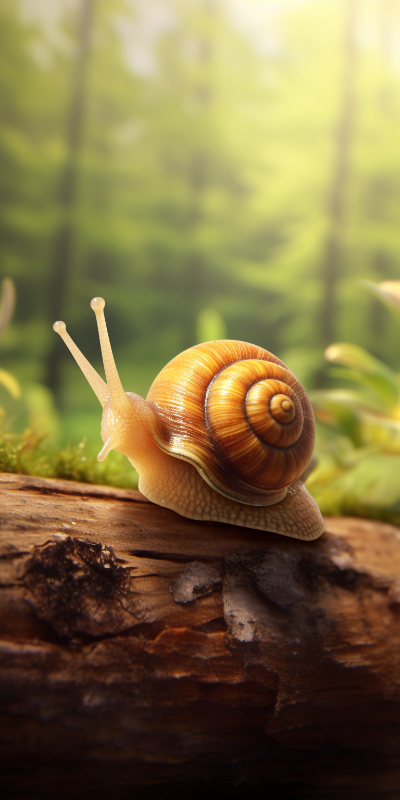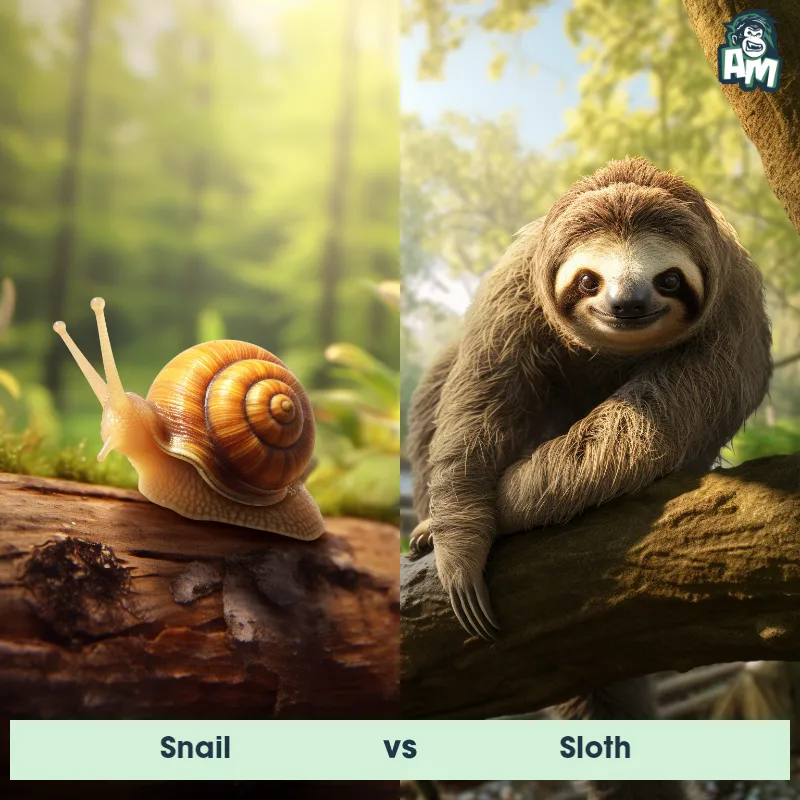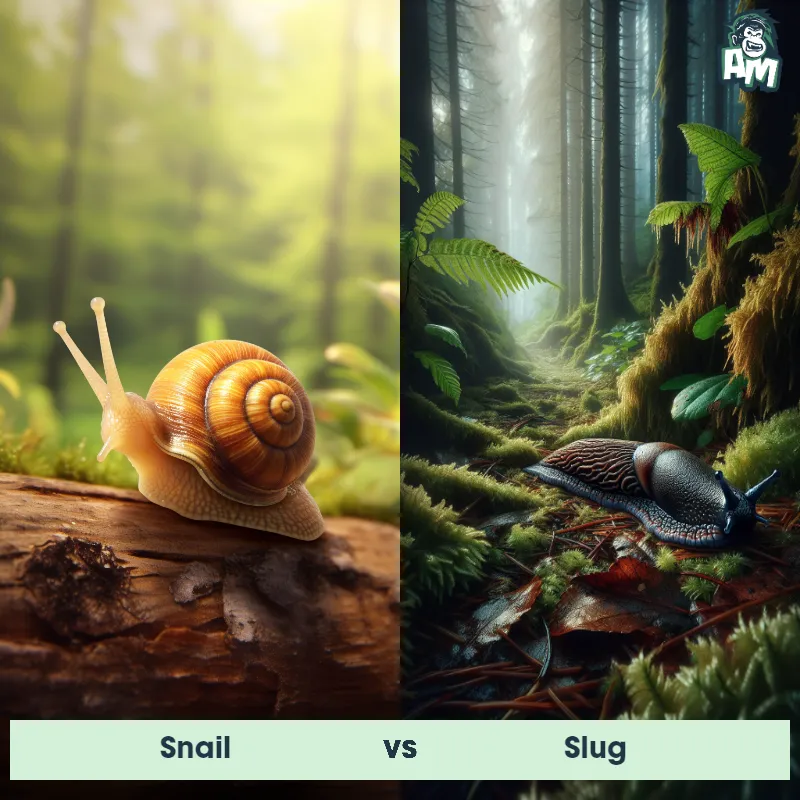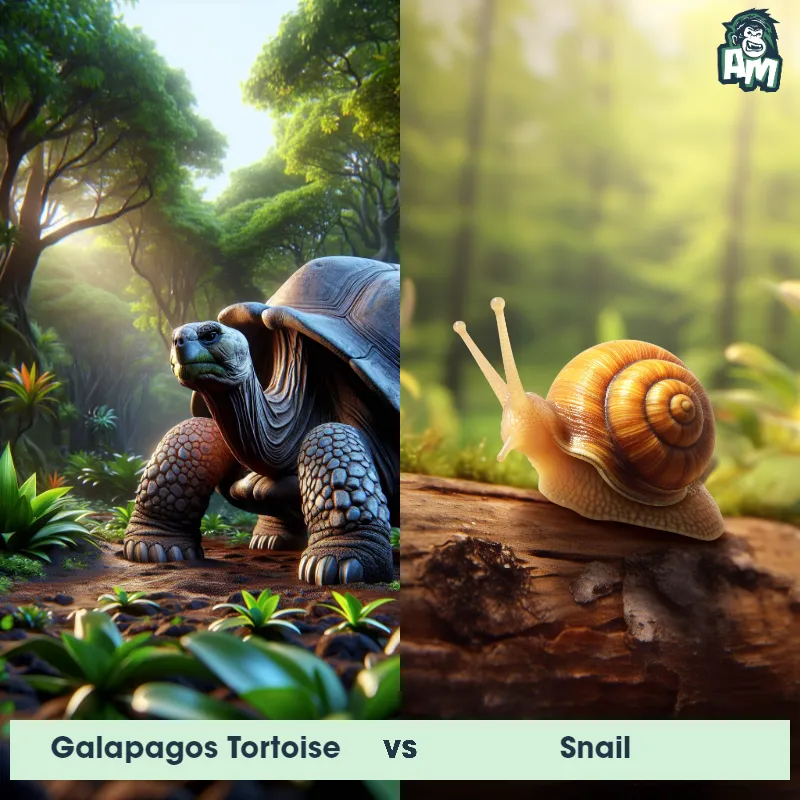The Snail
The Snail, also known as a gastropod mollusk, is a small invertebrate that is characterized by its spiral shell on its back. These creatures move slowly and are generally found in damp and humid environments like gardens, forests, and marshes. Snails are herbivores, feeding on a variety of plant matter, and can retract their body inside their shell to protect themselves from predators. They have a muscular foot that helps them glide along surfaces, a tentacle with an eye at the tip to help detect light and movement, and a mucus-producing gland that allows them to leave behind a slimy trail as they navigate their surroundings.

| Snail | |
|---|---|
| Size | Varies from 0.1 inches to 12 inches (0.25 cm to 30.48 cm) |
| Weight | Varies from 0.01 ounces to 32 ounces (0.3 grams to 907 grams) |
| Speed | 0.03mph (0.05km/h) |
| Key Strength | Ability to retreat into its shell for protection |
| Biggest Weakness | Slow movement |
| Scientific Name | Gastropoda |
| Family | Gastropod |
| Habitat | Terrestrial, Freshwater, Marine |
| Geography | Worldwide |
| Diet | Herbivore, Detritivore |
| Lifespan | 1 year - 10 years |

The Snail
The Snail, also known as a gastropod mollusk, is a small invertebrate that is characterized by its spiral shell on its back. These creatures move slowly and are generally found in damp and humid environments like gardens, forests, and marshes. Snails are herbivores, feeding on a variety of plant matter, and can retract their body inside their shell to protect themselves from predators. They have a muscular foot that helps them glide along surfaces, a tentacle with an eye at the tip to help detect light and movement, and a mucus-producing gland that allows them to leave behind a slimy trail as they navigate their surroundings.
Fun Fact: Snails are hermaphrodites, meaning they possess both male and female reproductive organs, allowing them to reproduce with any other sexually mature snail they encounter.
| Snail | |
|---|---|
| Size | Varies from 0.1 inches to 12 inches (0.25 cm to 30.48 cm) |
| Weight | Varies from 0.01 ounces to 32 ounces (0.3 grams to 907 grams) |
| Speed | 0.03mph (0.05km/h) |
| Key Strength | Ability to retreat into its shell for protection |
| Biggest Weakness | Slow movement |
| Scientific Name | Gastropoda |
| Family | Gastropod |
| Habitat | Terrestrial, Freshwater, Marine |
| Geography | Worldwide |
| Diet | Herbivore, Detritivore |
| Lifespan | 1 year - 10 years |
Snail Matchups
We use AI to simulate matchups between the Snail and other animals. Our simulation considers size, strength, and natural predatory behaviors to determine the most likely outcome.

Can't find the Matchup you want?
Create Your Own MatchupSnail: Diet, Predators, Aggression, and Defensive Behaviors
What do Snails eat?
Snails are herbivores and primarily feed on plants, fruits, and vegetables. They have a rasping tongue called a radula that they use to scrape food particles from surfaces. Some species of snails are known to be attracted to decaying organic matter as well.
Do Snails have any predators?
Yes, Snails have a range of predators in their natural habitat. They are often preyed upon by birds, small mammals, reptiles, and some insects. Even some species of beetles and other predatory snails are known to feed on snails.
Are Snails aggressive?
Snails are generally not aggressive creatures. They are known for their slow and deliberate movements, and they prefer to retreat into their shells when faced with danger rather than engaging in aggressive behavior.
Do Snails fight?
Snails do not engage in physical fights with each other or other animals. They rely on their shells for protection and are more likely to retreat or hide when faced with a potential threat.
How do Snails defend themselves?
Snails have a few defense mechanisms to protect themselves from predators. Their most prominent defense is their shell, which they can retract into when threatened. Some snails also secrete a slimy mucus that can be sticky or even toxic to deter predators.
What is the biggest weakness of Snails in a fight?
The biggest weakness of Snails in a fight is their slow and sluggish movement. While their shells provide protection, their lack of speed and agility make them vulnerable to faster predators. Additionally, their small size and relatively weak muscles limit their ability to defend themselves actively in a fight.
Fun Fact: Some species of snails are able to hibernate, sealing themselves inside their shells with a layer of mucus to protect themselves from extreme temperatures or dry environments.
Fun Fact: Snails have an incredible sense of smell, with receptors located on the tentacles that help them detect food, potential mates, and even danger from predators.













